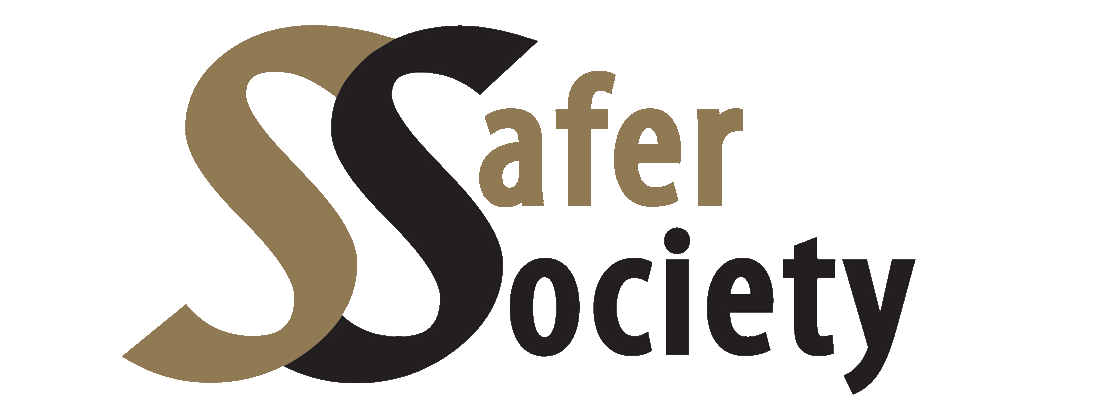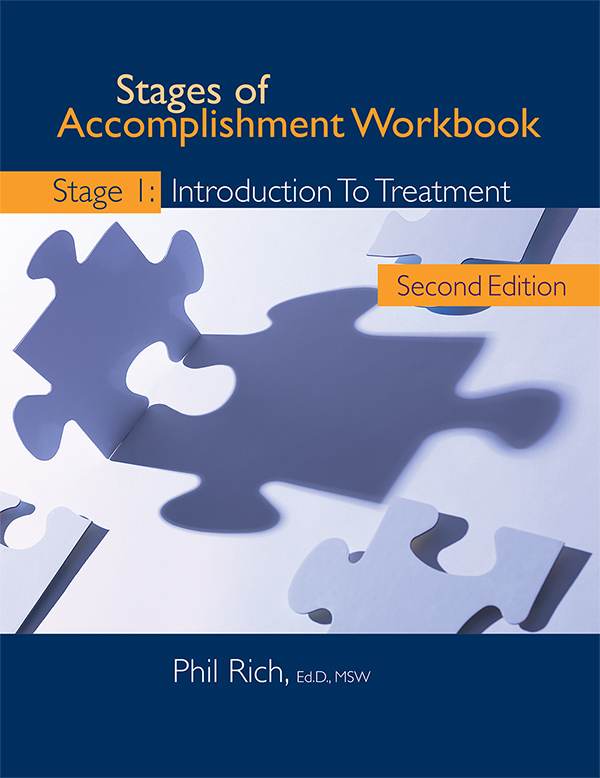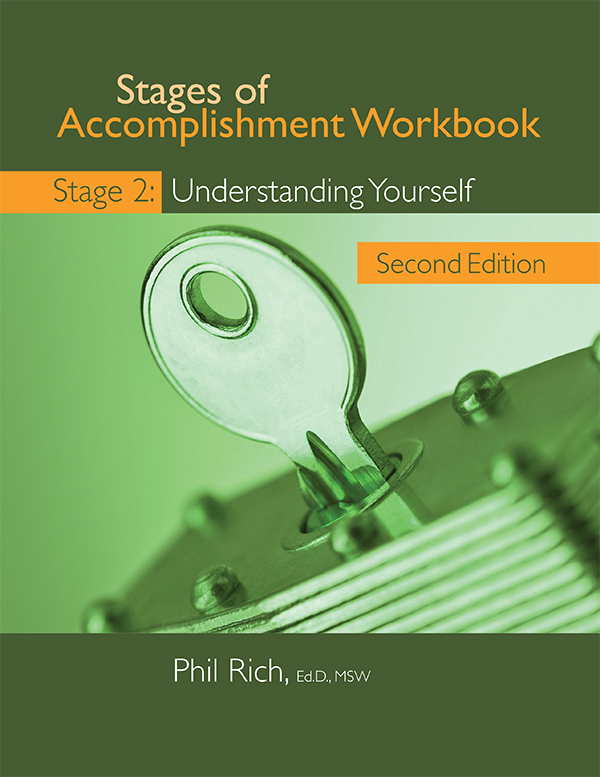Home / Shop / For Youthful Clients / Workbooks for Youthful Clients
Stages of Accomplishment: Stage 3 - Understanding Dysfunctional Behavior
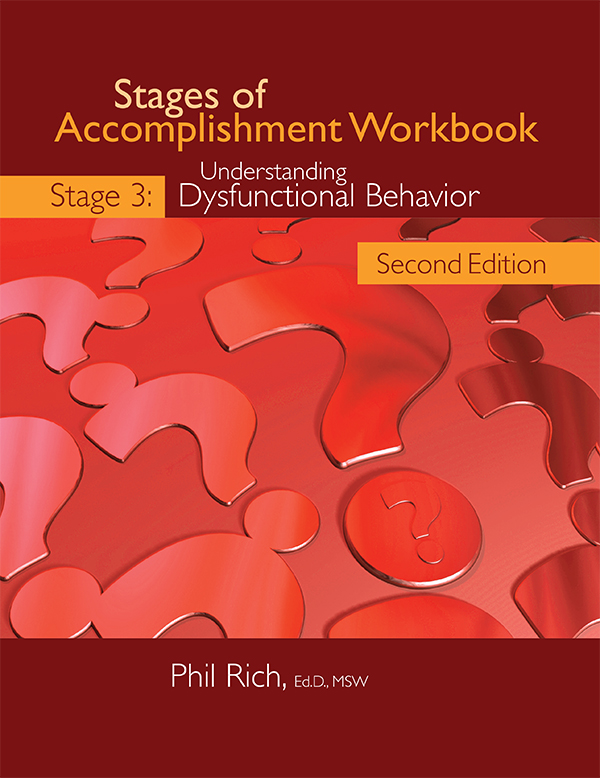
- Description
- Specifications
Stages of Accomplishment
Stage 3: Understanding Dysfunctional Behavior
By Phil Rich
With an aim to foster rehabilitation and pave the way towards a brighter future, the Stages of Accomplishment workbooks help clinicians guide young people with problematic sexual behaviors through a journey of self-discovery. The workbooks are designed to be used as one element of a comprehensive treatment program, although each can be used independently. Clinicians can use the workbooks to extend treatment beyond the therapy session, provide a foundation for discussion and exploration, and engage clients in self-directed learning.
Stages 1 and 2 of this workbook series laid a foundation for your discussions with your clients. Stage 1 provided an understanding of the therapeutic process and set expectations for what it involves. Stage 2 helped clients better understand how their thoughts, feelings, and behaviors influence one another. Both workbooks stressed the importance of acknowledging responsibility for one's actions.
Now, in this Stage 3 workbook, it is time to directly address the sensitive and complex issues surrounding your client's involvement in sexually abusive behavior.
This workbook begins with an introduction to two ideas central to personal change: (1) recognizing and altering dysfunctional behavioral cycles and (2) the development of a Safe Behavior Plan.
Understanding Behavioral Cycles
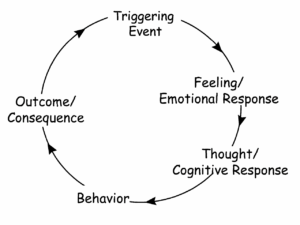 Clients are first introduced to the concept of behavioral cycles—the idea that, unless we interrupt a cycle, the way we have behaved in the past will likely occur again. The cycle starts with triggering events, which lead to our feelings and thoughts related to those events, our behaviors, and their consequences.
Clients are first introduced to the concept of behavioral cycles—the idea that, unless we interrupt a cycle, the way we have behaved in the past will likely occur again. The cycle starts with triggering events, which lead to our feelings and thoughts related to those events, our behaviors, and their consequences.
The workbook helps clients discover their triggers, shows them strategies for avoiding or managing those events, and outlines ways to alter their thoughts, feelings, and behaviors.
Preventing Relapse by Recognizing Phases
The workbook provides clients with reflection questions to help them identify the triggers in their lives (e.g., being bullied, using pornography, feeling angry or disconnected, being unsupervised around a potential victim). Each component in the cycle above is accompanied by periods of time (phases) during which typical thoughts and feelings arise. Clients are guided into identifying when those thoughts and feelings occur and what strategies can be used to prevent the cycle of behavior from recurring.
Awareness of what is happening in each phase is the key to interrupting the cycle of continued abuse. The workbook describes the phases in detail so clinicians and clients can anticipate and interrupt negative behaviors before they occur. It provides a thorough understanding of these phases.
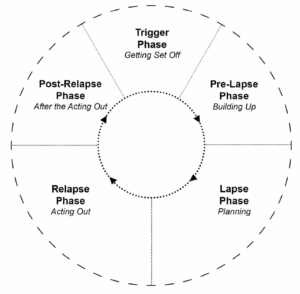 Trigger Phase - a situation or event sets off difficult emotions, thoughts, or abusive actions. Or you have placed yourself in high-risk situations.
Trigger Phase - a situation or event sets off difficult emotions, thoughts, or abusive actions. Or you have placed yourself in high-risk situations.
Pre-Lapse Phase - negative emotions like anger, loneliness, or frustration start building up inside you after being triggered. Pressure is building up inside during this phase.
Lapse Phase - involves inappropriate thoughts, urges, and fantasies about behaving negatively. Negative behaviors are being planned.
Relapse Phase - the negative thoughts and plans have turned into actual inappropriate, harmful behavior—breaking rules, harming self or others, committing crimes, etc.
Post-Relapse Phase - you either realize your mistake or make excuses for the behavior. Signs include minimizing, justifying, denying the behavior, and pretending all is normal. What you do in this phase determines if the cycle starts over again.
Creating a Safe Behavior Plan
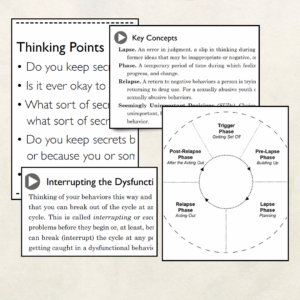 The information and questions provided in the workbook are designed to guide the creation of a Safe Behavior Plan (the preferred term over “relapse prevention”). The Plan includes strategies to identify and strengthen the client’s protective factors.
The information and questions provided in the workbook are designed to guide the creation of a Safe Behavior Plan (the preferred term over “relapse prevention”). The Plan includes strategies to identify and strengthen the client’s protective factors.
Additional topics are provided in the workbook to help clients create the plan together with their clinician:
- Social media and the internet
- Sexual self-regulation
- Detailed real-world scenarios
- Decision-making skills
A New Section on Healthy Sexuality
One of the unique new features of this edition of the workbook is the inclusion of information to help clients understand what a healthy sexual relationship is like in terms of respect, consent, and lack of coercion or violence and how it differs from what is often depicted in online pornography.
"Healthy sexuality involves a positive and respectful approach to sexual behaviors and relationships. Healthy sexuality involves sexual beliefs that are not harmful to self or others, and the belief that having pleasurable sexual experiences should be free of coercion, discrimination, and violence."
ISBN: 978-1-940234-26-7
Order #: WP215
Price: $17.00
128 pages, softbound
